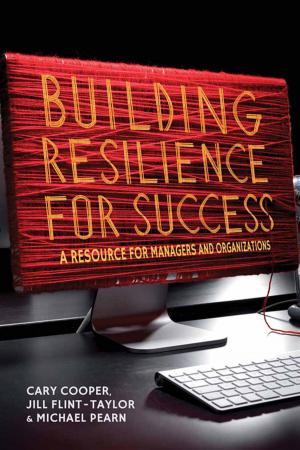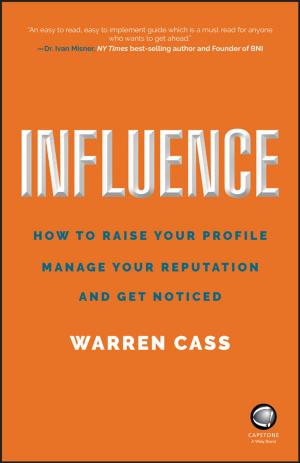Hiring Talented Team Players- A guide to getting it right
Business & Finance, Management & Leadership, Management, Human Resources & Personnel Management| Author: | Kingsley J. Wimbush | ISBN: | 9781301836451 |
| Publisher: | Kingsley J. Wimbush | Publication: | September 13, 2013 |
| Imprint: | Smashwords Edition | Language: | English |
| Author: | Kingsley J. Wimbush |
| ISBN: | 9781301836451 |
| Publisher: | Kingsley J. Wimbush |
| Publication: | September 13, 2013 |
| Imprint: | Smashwords Edition |
| Language: | English |
The most common hiring mistakes seldom come from selecting unqualified people. As the saying goes, “Hire for skills; fire for attitude.” The biggest mistakes come from hiring attitude problems and personality misfits. This failure is easy to understand. Very little is published on exactly how to detect attitudes during interviewing. And personality is too complicated to determine from interview questions.
Twenty seven years ago when I first set out coaching business leaders, they all seemed to want to focus on one subject—the frustrations they had with a handful of their problem employees. Yet, they liked them during the interviews and honeymoon periods but then became frustrated with them for the following reasons:
Being emotionally unstable, moody or defensive.
Having hidden agendas that neglected what management wanted.
Upsetting customers with an indifferent attitude.
Neglecting responsibilities.
Personality clashes or stubbornness.
Often absent.
Going through the motions only to save their jobs.
Lazy.
Continuing to break the rules even after being confronted about it.
This is what I discovered. I started by asking my clients why they didn’t address the symptoms. I remember Russell Borghese (made up name) looked at me in silence trying to figure out a good way to sugar coat his explanation or switch the subject. Then he told me about all the sleep he had lost over a particular troublemaker and how he hoped circumstances would magically improve. When I suggested he confront this employee, he said, “Yes, that’s a good idea.” Unfortunately, despite the compliment—nothing happened. The idea of confronting negativity, even though he knew he should, was at the very bottom of his mental priority list. In addition, the idea of firing problem employees was met with a “You’ve got to be kidding” look.
At first, I thought they didn’t know how to manage their employees. But, when I encouraged them to coach, train or confront their troublesome employees, the return on investment was minimal. When these employees quit, were laid off or fired, my clients were always relieved. The truth was they had hired the wrong people. In addition, unless a major lay off occurred or someone prodded them, the hiring mistakes became part of the scenery.
When I delved into the situation of difficult employees, it never turned out to be a qualification problem. If you have managed for a while, I bet you know what I am going to say the problem was. Yes, these people had attitude or personality problems.
Amazingly, most problem employees are great when they start. They must know how to fly under the radar. It seems as if the employer and employee go on a honeymoon. The good news is that some leave after a couple of weeks—but with truck loads of blame.
I concluded that the most difficult employees had attitude problems or had the wrong personality for the job they were doing. I heard very little about those who were unqualified or lacked education. My clients were either doing a good job at screening out those types or they noticed the incompetence and booted them out quickly. I should also note that some employees with low emotional intelligence (EQ) were not doing their fair share.
The most common hiring mistakes seldom come from selecting unqualified people. As the saying goes, “Hire for skills; fire for attitude.” The biggest mistakes come from hiring attitude problems and personality misfits. This failure is easy to understand. Very little is published on exactly how to detect attitudes during interviewing. And personality is too complicated to determine from interview questions.
Twenty seven years ago when I first set out coaching business leaders, they all seemed to want to focus on one subject—the frustrations they had with a handful of their problem employees. Yet, they liked them during the interviews and honeymoon periods but then became frustrated with them for the following reasons:
Being emotionally unstable, moody or defensive.
Having hidden agendas that neglected what management wanted.
Upsetting customers with an indifferent attitude.
Neglecting responsibilities.
Personality clashes or stubbornness.
Often absent.
Going through the motions only to save their jobs.
Lazy.
Continuing to break the rules even after being confronted about it.
This is what I discovered. I started by asking my clients why they didn’t address the symptoms. I remember Russell Borghese (made up name) looked at me in silence trying to figure out a good way to sugar coat his explanation or switch the subject. Then he told me about all the sleep he had lost over a particular troublemaker and how he hoped circumstances would magically improve. When I suggested he confront this employee, he said, “Yes, that’s a good idea.” Unfortunately, despite the compliment—nothing happened. The idea of confronting negativity, even though he knew he should, was at the very bottom of his mental priority list. In addition, the idea of firing problem employees was met with a “You’ve got to be kidding” look.
At first, I thought they didn’t know how to manage their employees. But, when I encouraged them to coach, train or confront their troublesome employees, the return on investment was minimal. When these employees quit, were laid off or fired, my clients were always relieved. The truth was they had hired the wrong people. In addition, unless a major lay off occurred or someone prodded them, the hiring mistakes became part of the scenery.
When I delved into the situation of difficult employees, it never turned out to be a qualification problem. If you have managed for a while, I bet you know what I am going to say the problem was. Yes, these people had attitude or personality problems.
Amazingly, most problem employees are great when they start. They must know how to fly under the radar. It seems as if the employer and employee go on a honeymoon. The good news is that some leave after a couple of weeks—but with truck loads of blame.
I concluded that the most difficult employees had attitude problems or had the wrong personality for the job they were doing. I heard very little about those who were unqualified or lacked education. My clients were either doing a good job at screening out those types or they noticed the incompetence and booted them out quickly. I should also note that some employees with low emotional intelligence (EQ) were not doing their fair share.















